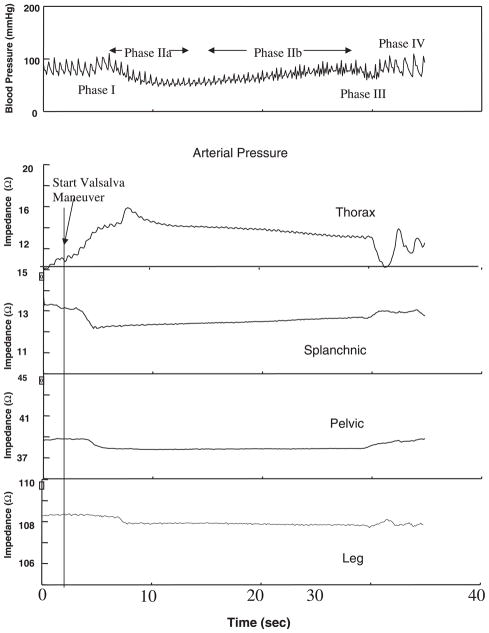Fig. 1.
Time course of blood pressure and thoracic, splanchnic, pelvic, and leg impedances during a representative Valsalva maneuver. Increase in thoracic impedance precedes phase I blood pressure change. Decreases in splanchnic, pelvic, and leg impedances occur at successively later times. Splanchnic impedance falls while thoracic impedance rises initially; thereafter, splanchnic impedance rises while thoracic impedance falls. Pelvic and leg impedance changes remain relatively stable throughout phase II.

